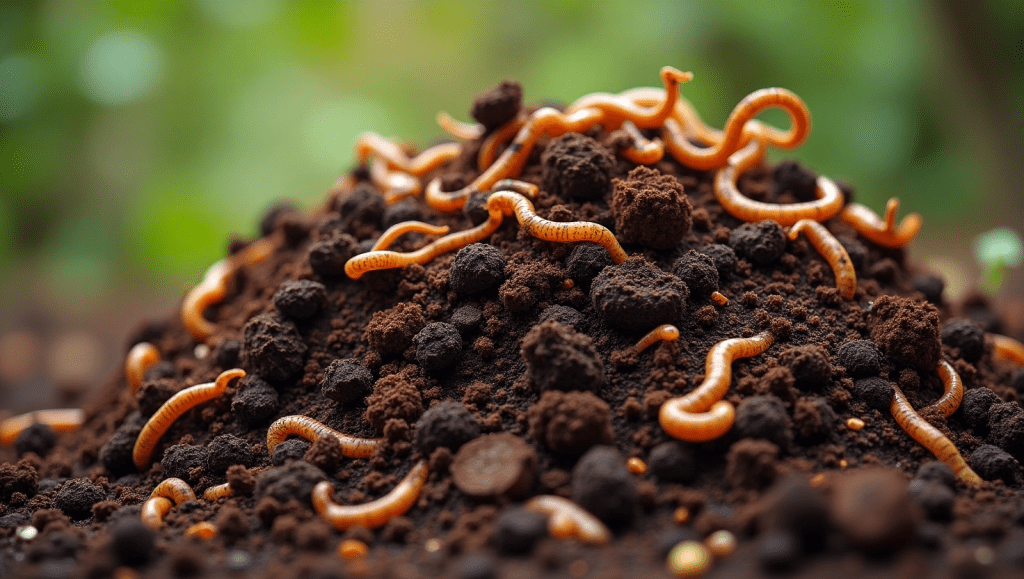Composting is one of the simplest and most effective ways to recycle organic waste and create rich soil for your garden. Whether you’re a beginner gardener or someone interested in sustainable living, understanding composting is essential. In this guide, we’ll break down composting meaning, how the composting process works, and the role of a composter in turning kitchen and yard waste into valuable compost.

What Is Composting? (Composting Meaning)
Composting is a natural process where organic matter, such as food scraps and yard waste, breaks down into a nutrient-rich soil conditioner known as compost. Microorganisms like bacteria, fungi, and insects help decompose the waste, turning it into a dark, earthy material that improves soil health.
So, the composting meaning can be summed up as the controlled biological decomposition of organic material into a humus-like substance that enhances soil fertility.
What Does Composted Mean?
The term composted refers to organic material that has completed the composting process. When something is composted, it means it has been broken down by microorganisms and transformed into a stable, usable form of organic matter. This composted material is rich in nutrients and can be used to fertilize gardens, farms, and houseplants.
For example:
- Kitchen scraps like vegetable peels can be composted.
- After a few weeks or months, they turn into compost that nourishes your plants.
The Composting Process: Step-by-Step
Here’s how the composting process works from start to finish:
1. Collection of Organic Waste
Gather compostable materials such as:
- Fruit and vegetable scraps
- Coffee grounds and filters
- Grass clippings
- Dry leaves
- Eggshells
Avoid meat, dairy, and oily foods as they can attract pests and slow down the composting process.
2. Balancing Green and Brown Materials
To compost effectively, you need a good mix of:
- Green materials (nitrogen-rich): food scraps, grass clippings
- Brown materials (carbon-rich): dry leaves, cardboard, newspaper
A ratio of 2–3 parts brown to 1 part green works best.
3. Aeration
Turning the compost pile regularly introduces oxygen, which speeds up decomposition and prevents foul odors.
4. Moisture Control
Your compost should feel like a wrung-out sponge—moist but not soggy. Add water if it’s too dry or more brown materials if it’s too wet.
5. Decomposition and Maturation
Over time, microorganisms break down the materials. Within 2–3 months (in ideal conditions), the pile will shrink and turn into dark, crumbly compost.
What Is a Composter and How Does It Work?
A composter is a container or structure designed to facilitate the composting process. Composters come in various types:
- Tumbler composters: Rotate easily to mix materials and speed up decomposition.
- Stationary compost bins: Simple bins where you add layers and turn occasionally.
- Worm composters (vermicomposters): Use worms to break down food scraps efficiently indoors or outdoors.
How a Composter Works:
- You place green and brown materials into the composter.
- Microorganisms and, in some cases, worms begin breaking down the waste.
- Heat is generated as the pile decomposes, killing off pathogens.
- Regular turning ensures proper airflow.
- After several weeks or months, the waste is composted and ready to be used in your garden.
Benefits of Composting
- Reduces landfill waste: Up to 30% of household waste is compostable.
- Enriches soil: Compost improves soil structure, moisture retention, and nutrient content.
- Cuts down greenhouse gas emissions: Decomposing organic waste in landfills produces methane. Composting prevents this.
- Cost-effective: Reduces the need for chemical fertilizers.
Final Thoughts
Understanding the composting meaning, what it means when something is composted, and how a composter works can empower you to make a positive environmental impact. Whether you’re starting a small kitchen compost bin or a large outdoor pile, the result is the same: rich, natural compost that feeds your soil and reduces waste.






